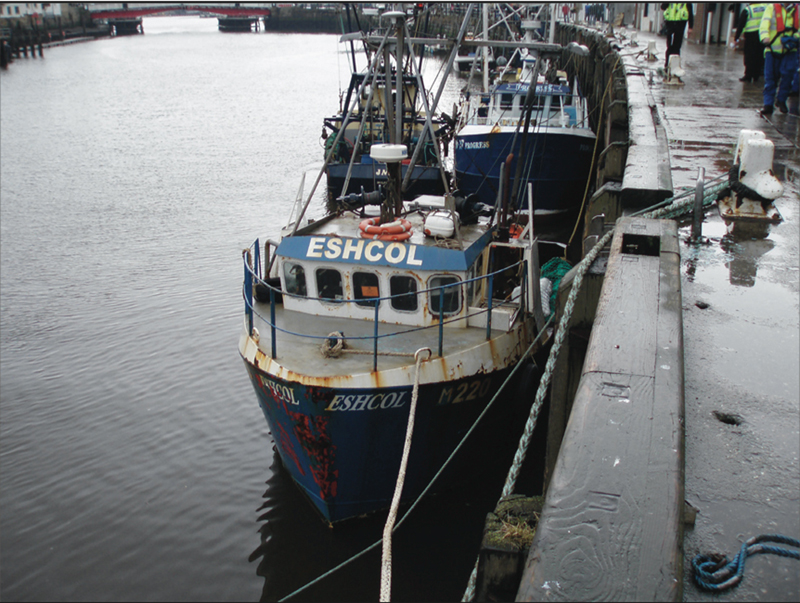The Boat Safety Scheme (BSS) is asking boaters: ‘Are you wise to carbon monoxide poisoning?’ following the discovery of two bodies on a private boat on the Norfolk Broads.
An initial inquest hearing on 23 June confirmed that the poison gas caused the deaths of two boaters on a private boat on Wroxham Broad, Norfolk.
The bodies of Alan Frost, 64, and Tina Wilkins, 51, from Grays, Essex, and a dog, were found on the motor cruiser moored near Wroxham Island, on 9 June.
An investigation was prompted by the lack of activity on the boat for some time.
Earlier this month, Norfolk Police said the deaths were not being treated as suspicious.
While the source of the carbon monoxide is to be confirmed, the BSS is reissuing its general CO safety advice for all boaters with the aim that, before someone steps aboard, they know how to recognise the risks of carbon monoxide (CO) poisoning and how to protect themselves from the ‘silent killer’.
Carbon monoxide is a colourless, odourless gas, hence the silent killer tag, and can kill quickly if inhaled in high concentrations.
At lower levels of CO as it begins to take affect, the symptoms of poisoning are similar to flu or food poisoning, and include headaches, nausea and dizziness.
As time passes and, or the amount of CO builds, you may suffer chest pains and breathlessness leading to seizure, unconscious. And if nothing is done, death can happen quickly after that.
So the early recognition of the symptoms is critical and action to get out to fresh air straight away can save lives.
This deadly poison gas has multiple potential sources on boats including all fuel-burning appliances, flues, chimneys, engine exhausts and charcoal BBQs. In particular, the Boat Safety Scheme warns that CO build-up in the confined space of boat cabins can occur with one or a mix of these factors:
- with faulty, badly maintained or misused appliances
- exhaust fumes from a boat’s engine or generator-
- escaped flue gases from solid fuel stoves
- blocked ventilation or short supply of air-fuels need the right amount of oxygen to burn safely
More than 30 boaters have died in the last 20 years from carbon monoxide poisoning.
Boat Safety Scheme Advice on avoiding a carbon monoxide incident is to:
- Know the signs and symptoms of CO poisoning and how to react if is suspected
- Install fuel burning appliances properly
- Maintain appliances and engines routinely, competently and without bodges
- Use equipment correctly. Never use cookers for space heating
- Air is vital for fuel-burning appliances – never block ventilation, allow a sufficient supply
- Don’t bring charcoal BBQs on board during or after use – only stone-cold charcoal is safe
- Keep engine fumes out of the cabin, never use a portable generator on the boat – if you can smell exhaust fumes aboard you may be at risk
- Know the danger signs, spot potential hazards early
- Deal with problems immediately, never use equipment you suspect has problems
- Install a certified CO alarm (BS EN 50291-2), test it routinely and never remove the batteries except to replace them
Graham Watts, a Boat Safety Scheme spokesman, added: ‘Over a million people go boating free from harm each year, but to go boating safely, the risks need treating with due respect. Carbon monoxide in a small space like a boat cabin has to be avoided.
‘By following the basic advice on our website and by having CO alarms on board as a back-up, you should have a happy and incident-free time afloat.’
For more information visit www.boatsafetyscheme.org/CO
Fatal CO poisoning on motor cruiser
A MAIB report has been published following the tragic deaths of a mother and daughter on board a motor cruiser…
Carbon monoxide warning to boat owners following double tragedy
Two young men died when they left a gas cooker grill on to heat their boat
Free Carbon Monoxide helpline launched
The deadly gas affects boats and anywhere where fuel is burnt in an enclosed space
Minimise carbon monoxide risks on boats
Fire and safety company Safelincs has produced a free safety booklet
Boaters warned about the dangers of portable generators
Blunt warning about the dangers of using portable generators onboard from leading inland boat safety body
Initial report into Lake Cumbria tragedy
An improvised exhaust and silencer system on the boat's generator may have caused the mother and daughter deaths
Warning after boat fire explosion caused by petrol spillage
Flammable vapours caused by a petrol spillage sparked a boat explosion that injured four adults and two children, say fire…
Portable gas cooker advice for boat owners
Boat Safety Scheme warning aimed at daysailers as well as inland waterways users












